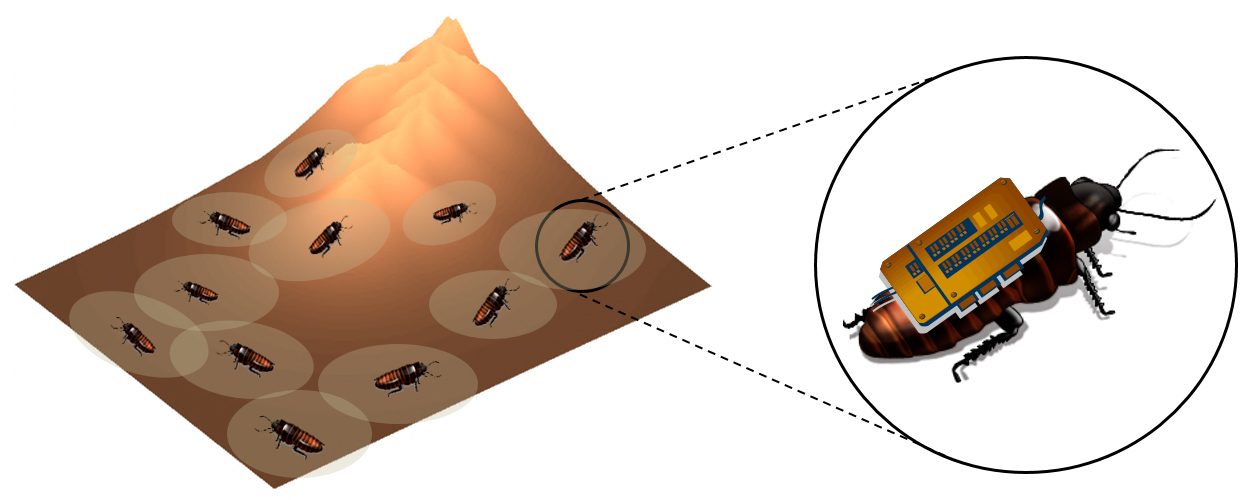Cyborg swarm maps unknown environments
October 17, 2013

(Credit: Edgar Lobaton.)
Well, here’s an update: they have now developed software that allows for mapping unknown environments — such as collapsed buildings — based on the movement of a swarm of the insect cyborgs.
“We focused on how to map areas where you have little or no precise information on where each biobot is, such as a collapsed building where you can’t use GPS technology,” says Dr. Edgar Lobaton, an assistant professor of electrical and computer engineering at NC State and senior author of a paper on the research.
“One characteristic of biobots is that their movement can be somewhat random,” Lobaton says. “We’re exploiting that random movement to work in our favor.”
Here’s how the process would work in the field.
- A swarm of biobots would be equipped with electronic sensors and released into a collapsed building or other hard-to-reach area.
- The biobots would initially be allowed to move about randomly. Because the biobots couldn’t be tracked by GPS, their precise locations would be unknown. However, the sensors would signal researchers via radio waves whenever biobots got close to each other.
- Once the swarm has had a chance to spread out, the researchers would send a signal commanding the biobots to keep moving until they find a wall or other unbroken surface — and then continue moving along the wall. This is called “wall following.”
- The researchers repeat this cycle of random movement and “wall following” several times, continually collecting data from the sensors whenever the biobots are near each other. The new software then uses an algorithm to translate the biobot sensor data into a rough map of the unknown environment.
The software would also allow public safety officials to determine the location of radioactive or chemical threats, if the biobots have been equipped with the relevant sensors.
The researchers have tested the software using computer simulations and are currently testing the program with robots. They next plan to work with fellow NC State researcher Dr. Alper Bozkurt to test the program with biobots.
The paper, “Topological Mapping of Unknown Environments using an Unlocalized Robotic Swarm,” will be presented at the International Conference on Intelligent Robots and Systems to held Nov. 3–8 in Tokyo, Japan. Lead author of the paper is Alireza Dirafzoon, a Ph.D. student at NC State.
The work was supported by National Science Foundation grant CNS-1239243.
(¯`*• Global Source and/or more resources at http://goo.gl/zvSV7 │ www.Future-Observatory.blogspot.com and on LinkeIn Group's "Becoming Aware of the Futures" at http://goo.gl/8qKBbK │ @SciCzar │ Point of Contact: www.linkedin.com/in/AndresAgostini
 Washington
Washington